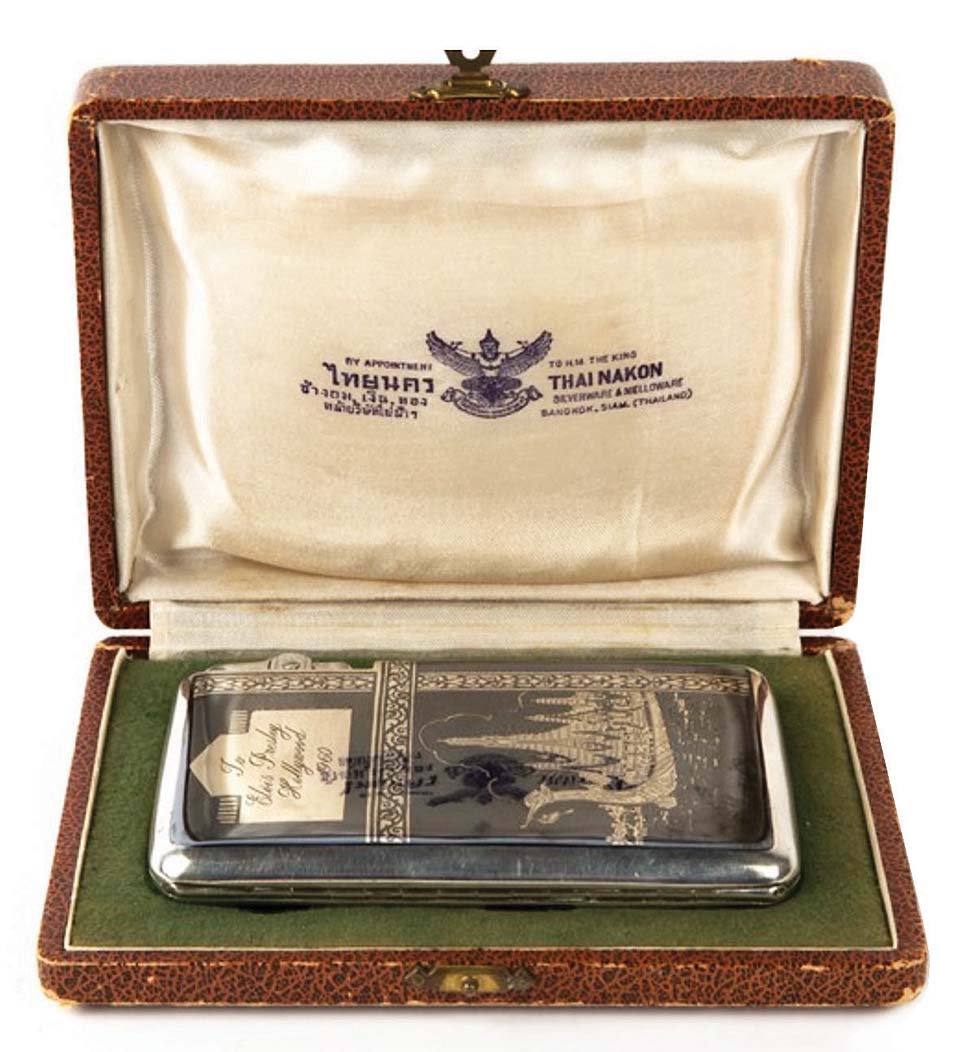
Elvis Presley was well known for his generosity. He could also be called the king of Cadillacs. It is estimated that Elvis gave away 200 Cadillac cars before his tragic death.
Elvis did not only give away Cadillacs, but he also gave gifts to charities, both national and local. It is estimated that the annual donations reached US$ 2 million. He would give gifts to those who worked for him, including family and friends, and very often to strangers.
Elvis would also receive gifts. When Their Majesties the late King Bhumibol Adulyadej and Queen Sirikit Kitiyakara were on their first official visit to the United States in June 1960 they had a very busy program. U.S. president Dwight D. Eisenhower welcomed them personally, King Bhumibol Adulyadej addressed the US Congress on the 29th of June and Their Majesties went on to visit New York City.
On their visit to California, Walt Disney welcomed Their Majesties together with Prince Vajiralongkorn, now the King, and Princess Ubol Ratana Rajakanya to Disneyland theme park.
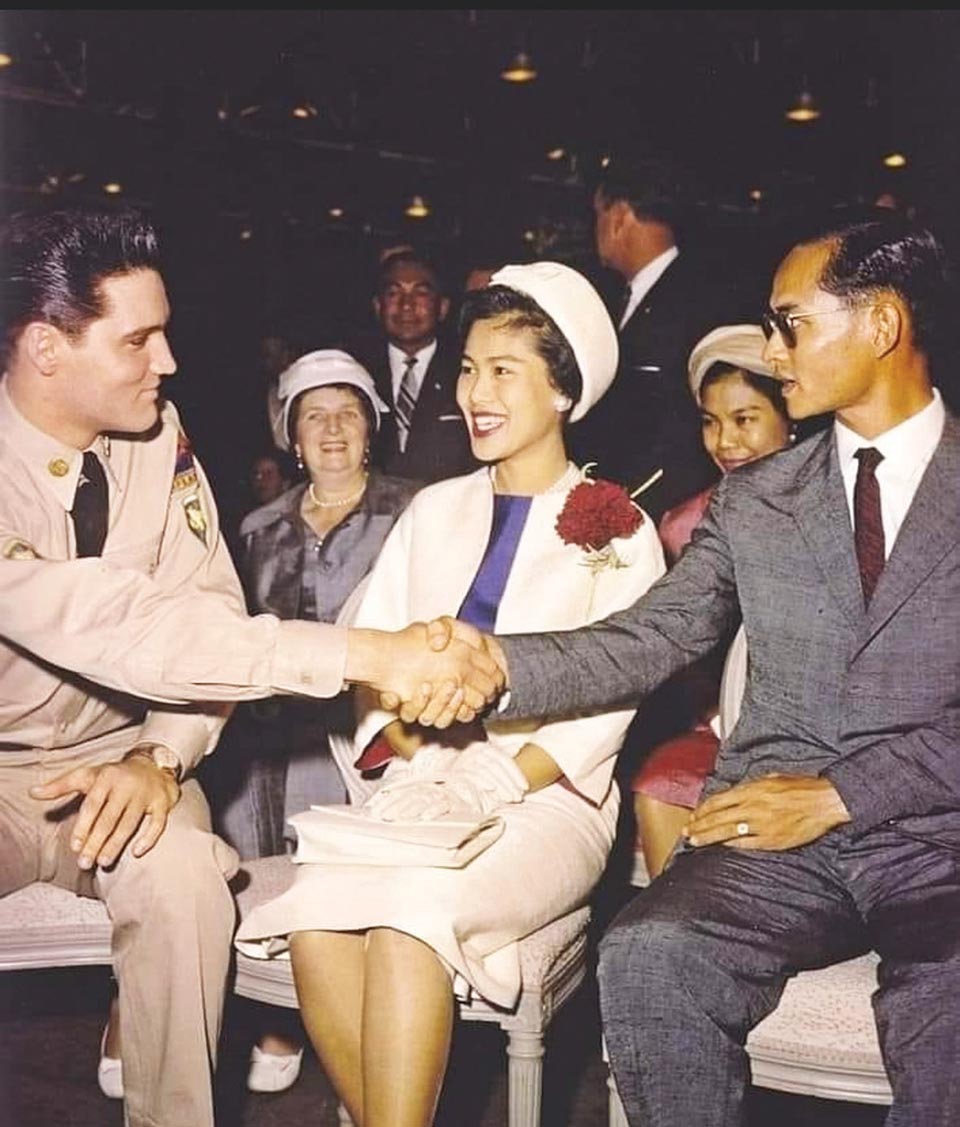
HM King Bumibol and Queen Sirikit both music aficionados met with Elvis Presley on the set of G.I. Blues during their visit to Paramount Studies. On this occasion HM King Bhumibol presented Elvis with a combined cigarette and lighter case produced by the Thai Nakorn company. This company was the best silversmith in Bangkok at the time and were bestowed the Garuda emblem by HM the King. The engraving on the front of the box read, “To Elvis Presley Hollywood 1960” and on the inside of the box, the words “King Bhumibol Adulyadej To the King of Rock ดnด Roll” were engraved. Included in the engraving was the stamp of the producer of the box “THAI NAKORN SIAM STERLING” with the Garuda in the middle.
Elvis Presley gave the unique combined lighter and cigarette box to Ursula Adelaide Aylmer (Nixon) who was working in America as an English teacher in the 1960s and had come to know or work for Elvis. Ursula Adelaide Aylmer kept the box until she passed away in 2021 at the age of 92. The family decided to sell the box and it will be offered in the Eur-Seree auction in Bangkok on 1-2 April 2023.

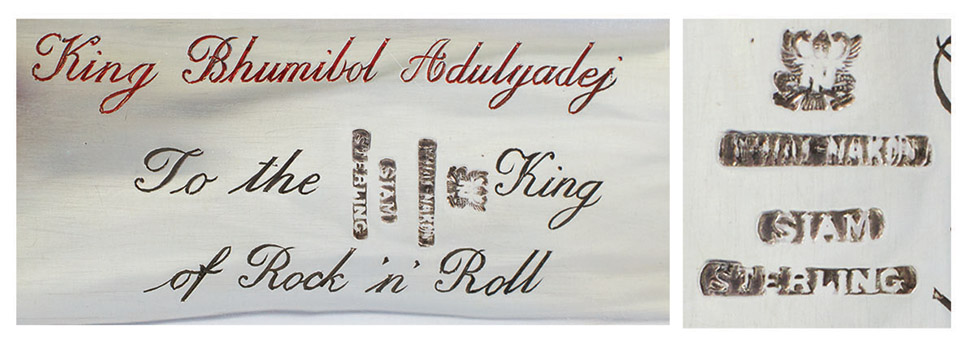
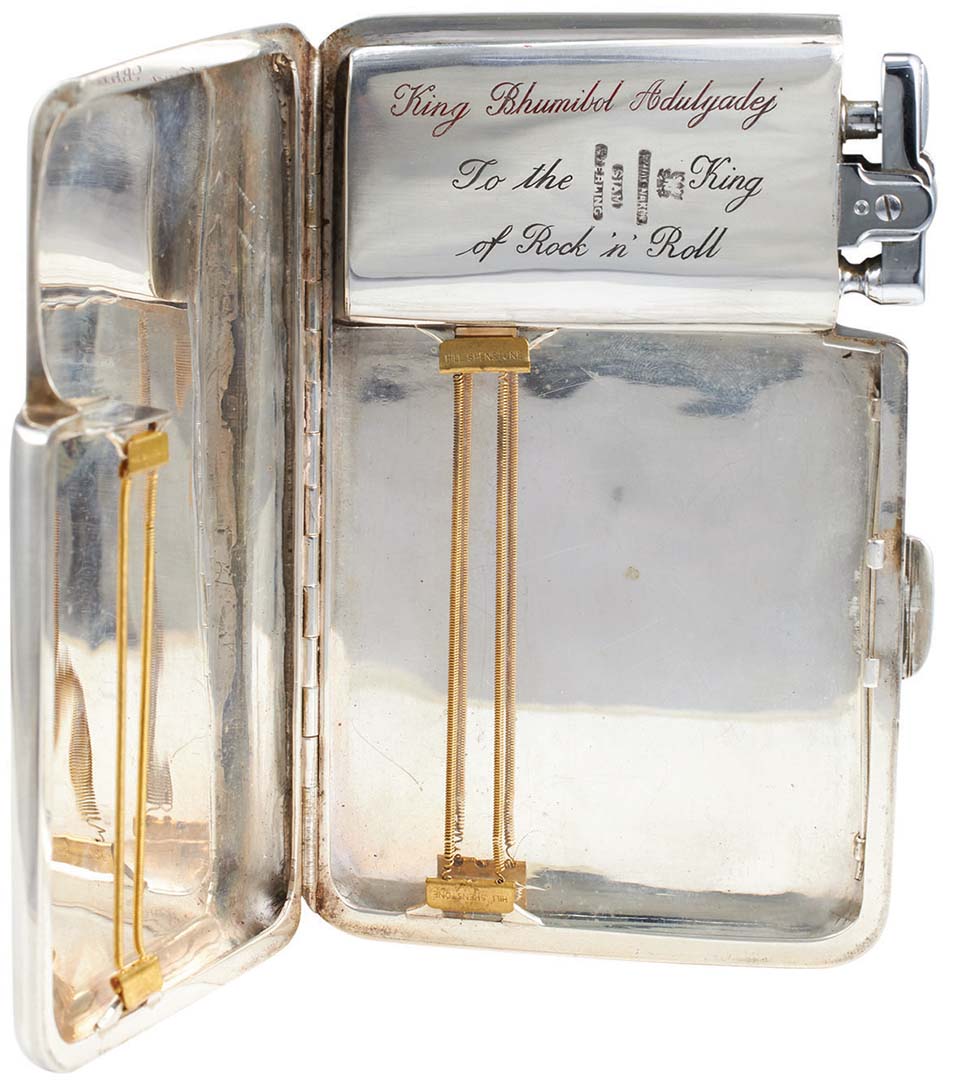
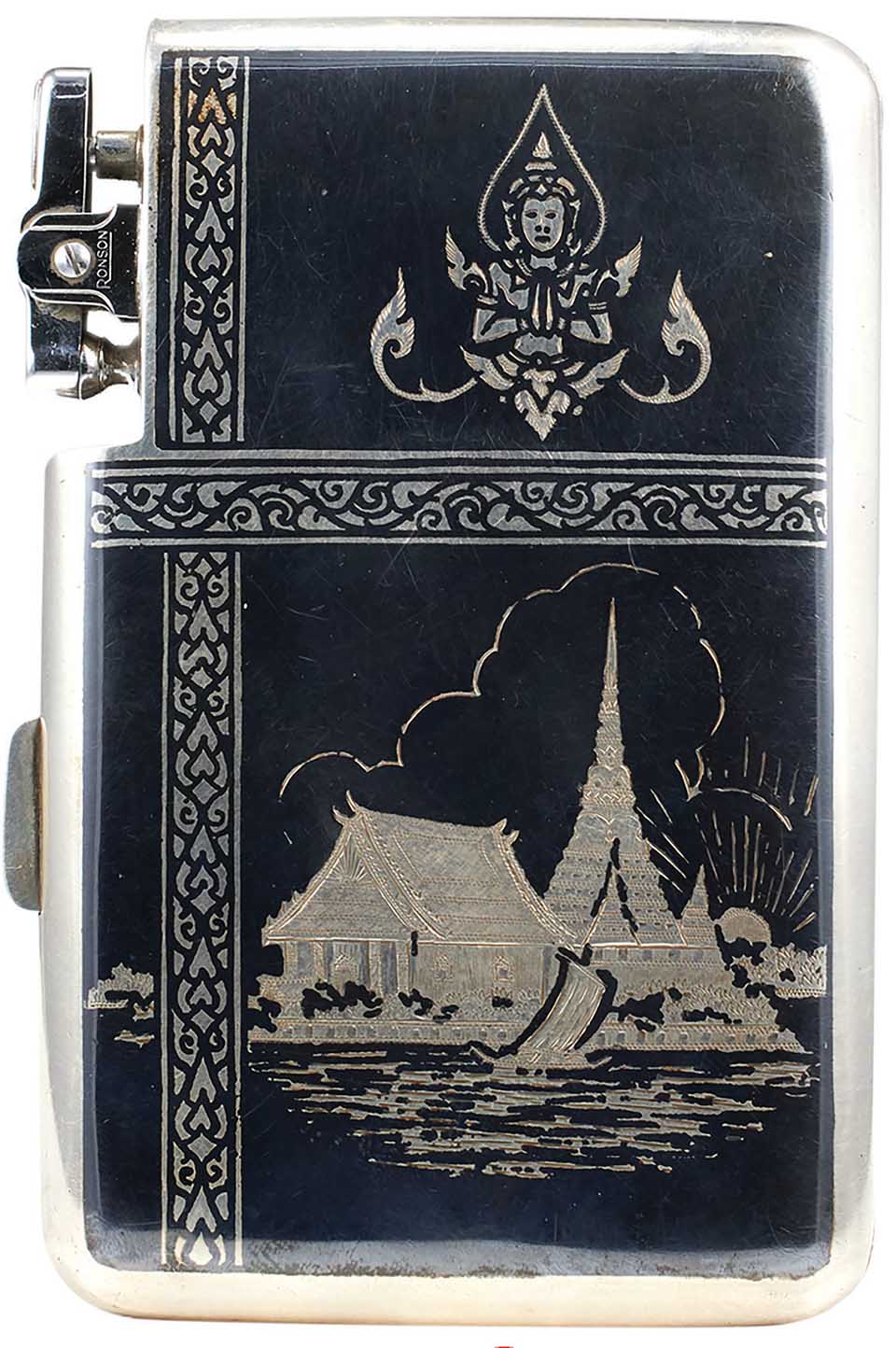
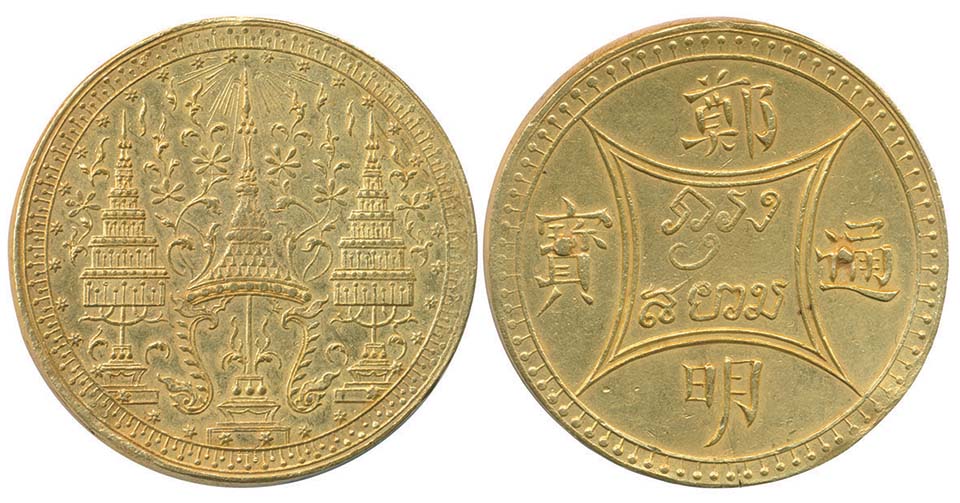
Other interesting objects at the Eur-Seree auction is the Tamlung, 4 Baht, in gold struck in 1864 to commemorate King Mongkut, Rama IV’s 60th Birthday.
On the obverse is the Crown with rays flanked by Umbrellas with three branches in the background and bordered by 32 stars, each star representing one Fuang.
On the reverse is the inscription “Krung Siam” enclosed within a frame and the Chinese legend “Cheng Ming Tung Pao” outside the frame. “Cheng Ming” is the name of Rama IV in Chinese and “Tung Pao” means “lawful money.
This beautiful coin is from the collection of late lawyer Pakdi Yongvanich who passed away in 2010. He was a coin and stamp collector. His great stamp collection was sold in Eur-Seree auction in 2013.
The gold Tamlung, 4 Baht, has been mounted which is not unusual for this coin as the King permitted both the gold and those struck in silver of this coin to be used as decorations. It has traces of the removed mounting on the reverse outside the frame in Chinese letters to the left and right. Anyway the coin is very well struck and will definitely be sold for several times the starting price of Baht 1,000,000.
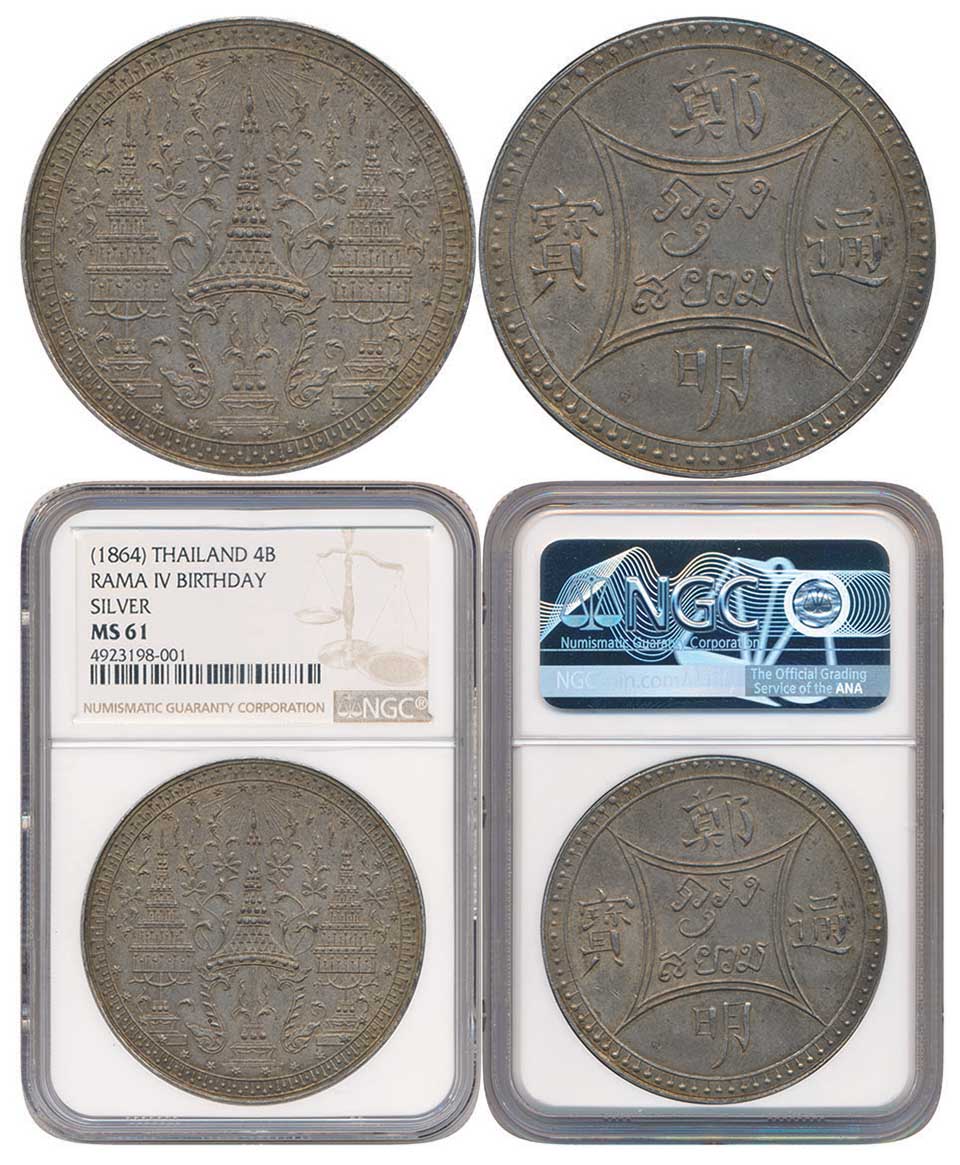
In the sale there is also a silver Tamlung, 4 Baht, same as the one in gold. This is a chance to complete the collection of Tamlung from 1864, the only “broadthaler” from Thailand struck before those produced for the millennium in the reign of King Bhumibol, Rama IX. Actually, those were coins with the weight of 5 ounces. The silver Tamlung is one of the best graded by NGC, MS61. In Eur-Seree auction #61 there was one in graded by PCGS to be 62+. The coin had something called a planchet flaw, not mentioned by the grader. This sold for Baht 1,550,000. In my opinion the coin coming up in auction #63 does have a nicer appearance, the starting price is Baht 1,500,000.
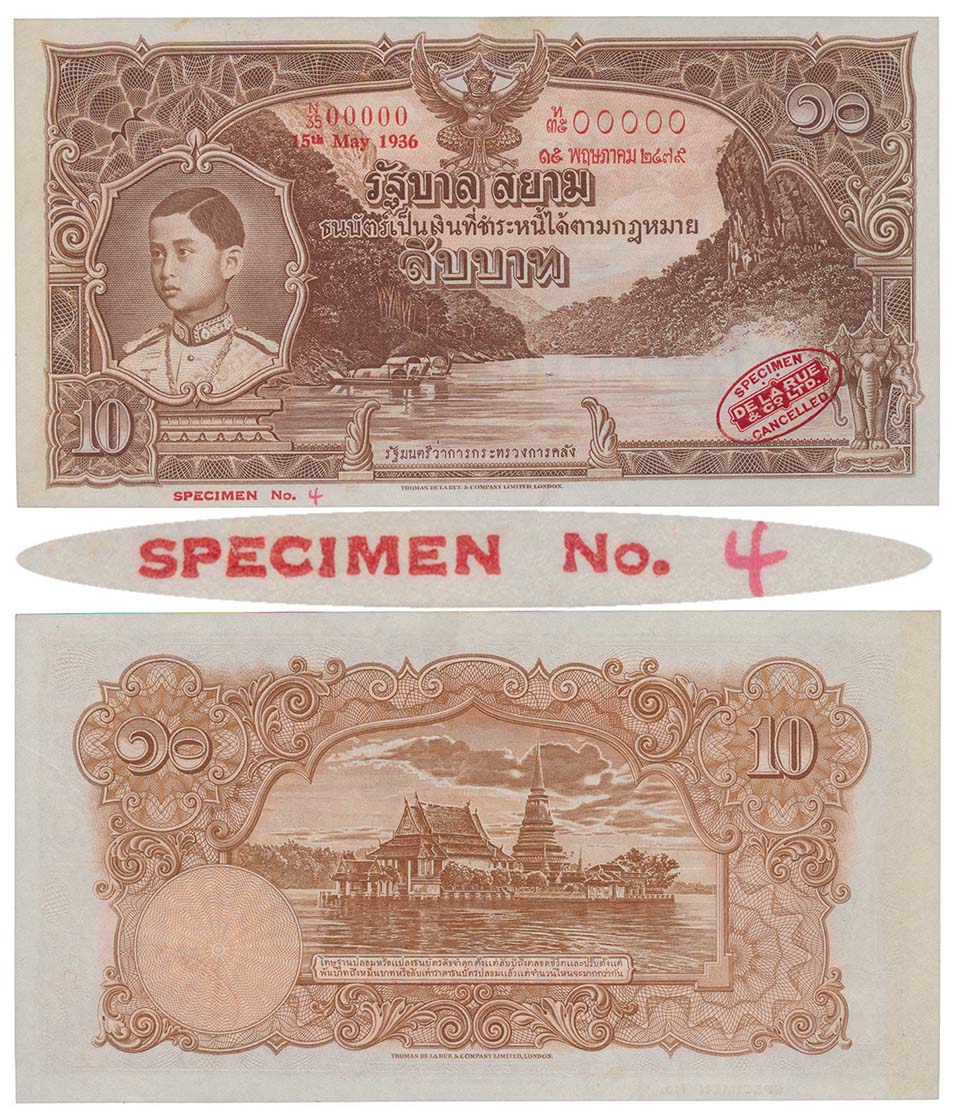
Some Specimen banknotes are up for sale in Eur-Seree sale # 63 including a 10 Baht dated 15th October 1936, printed during the reign of King Ananda Mahidol, Rama VIII, Third Series, Type II, with prefix N/35 and number 00000. It does have the oval red DE LA RUE CANCELLED stamp in the lower left corner and stamped in red “SPECIMEN No. 4” in lower left margin. The paper is very nice, as it was kept in the archives of Thomas de la Rue in England until a few years ago. Unfortunately, many banknotes kept in Thailand have become brownish in colour because of the heat/humidity. The starting price of this beautiful banknote is Baht 160,000.

The 20 Baht Specimen Third Series, Type II, is much rarer than the 10 Baht. In the sale is a 20 Baht banknote dated 1st May 1936, printed during the reign of King Ananda Mahidol, Rama VIII, with prefix P/14 and number 00000. In lower left corner in red “SPECIMEN No. 25”. This is the nicest exemplar to appear in the market. The paper is very nice, as it was kept in the Thomas de la Rue archives in England until a few years ago. Starting price for this high quality Specimen banknote is Baht 200,000.
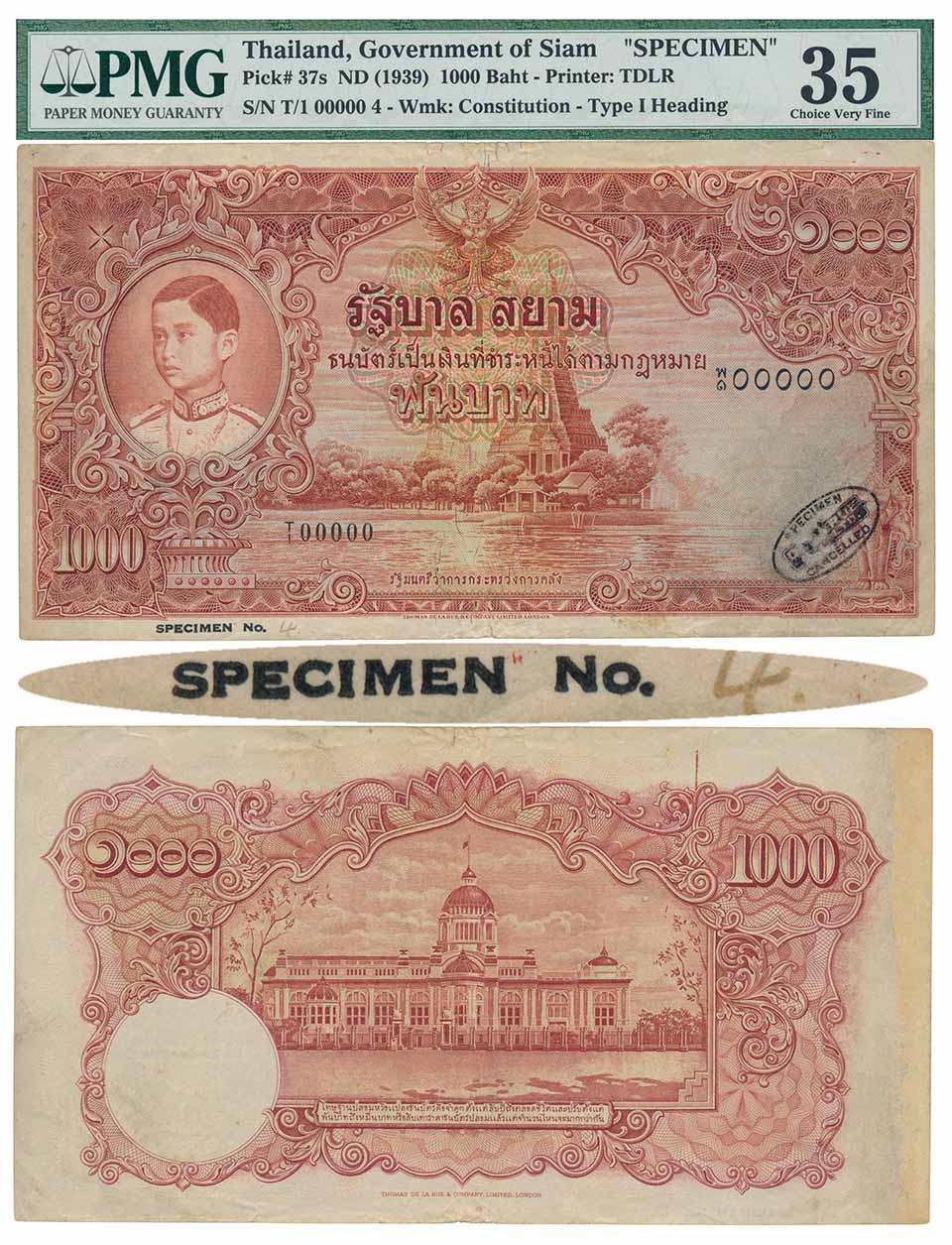
The 1000 Baht Specimen does not appear often in the market. One that was printed during the reign of King Ananda Mahidol is offered in the sale. It is graded by PMG to be 35, Choice Very Fine. It has prefix T/1 and the number 00000. In right lower corner it has the black DE LA RUE CANCELLED stamp on it. In the lower left margin it is stamped in black “SPECIMEN No. 4”. The starting price is Baht 250,000.
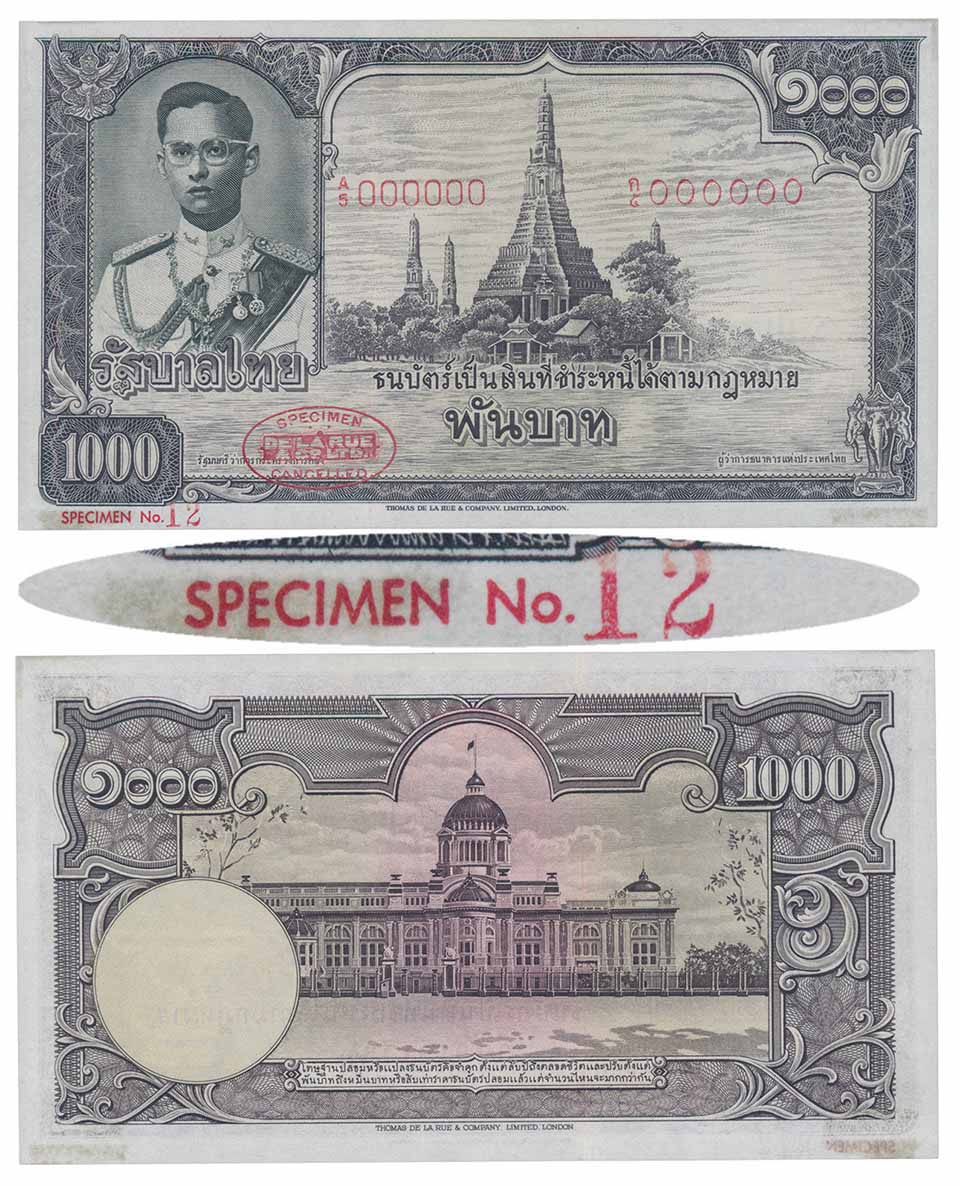
A very popular banknote is the 1000 Baht printed in 1948/49 and delivered to Thailand in 1952. It was supposed to be part of the Ninth Series, but never put in circulation. On the obverse to the left is a portrait of the late King Bumibol, Rama IX in a Field Marshall uniform. The picture of Wat Arun s in the centre. On the reverse is the picture of Ananta Samakhom Throne Hall. The Specimen banknote has the prefix A/5 and number 000000. In lower left margin “SPECIMEN No. 12” is stamped in red. It has been discussed why this banknote was not put in circulation. Some were of the opinion that a note with such high face value would lead to inflation. The first banknote with the face value 1000 Baht, after those printed during WWII and before, was put in circulation in 1992. The 1000 Baht banknotes printed in 1948/49 were incinerated except for approximately 100 banknotes which were kept by the Bank of Thailand and Specimen notes kept by the printer Thomas de la Rue & Company Limited. The one in the sale is one of the banknotes from the archives of Thomas de la Rue. It does have traces of mounting. Even so the note is in Almost Uncirculated condition. The starting price is Baht 400,000.
Several other interesting objects will be offered in Eur-Seree auction # 63; among them an 80 Baht bullet coin issued 6th May 1859. A complete set of bullet coins, 80-, 40-, 20-, 10-, 4- and 2 Baht issued 1880





